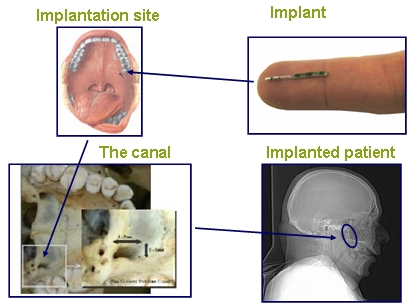It’s always exciting news to discover that 3D printing is finding its way into medical treatments and research. Most recently, Princeton embedded tiny light emitting diodes into a contact lens, proving that the capabilities of 3D printing include creating complex electronics. And, most broadly, the ability of 3D printing to create custom prosthetics like the ones fashioned by Robohand USA and E-Nable provide heartwarming proof of the power of 3D printing to change lives.

According to their website, Brainsgate is a “medical device company committed to developing a novel treatment modality, electrical SPG stimulation,” and they are “currently focusing on improving the outcome of patients suffering from ischemic stroke.”And the BIRD Foundation explains that the funding is for Brainsgate and Formlabs to create “3D printed patient-specific implantation guides for injectable stroke treatment neurostimulators.”
The details are somewhat hard to discern, but let’s start with Brainsgate’s proprietary SPG therapy. As a person who gets migraines pretty regularly, one of the treatments for severe migraines something called an SPG block. The SPG stands for sphenopalatine ganglion block. The sphenopalatine ganglion are a collection of nerve cells located underneath tissue that lines the back of your nose. The migraine treatment involves applying a local anesthetic to the area so that nerve connections can be blocked,providing some relief.
The Brainsgate’s site explains that the way that their “SPG stimulation technology” works is by increasing “collateral blood flow, bypassing the blocked section of the cerebral artery and bringing needed oxygen to damaged areas of the brain.”So my guess is that they will work together on a case-by-case basis to show how to specifically implant their SPG stimulation therapy using 3D printed sections of a stroke victim’s brain. They could also be using a 3D printed injection device custom-designed to fit the structure of an individual’s brain, making the device less invasive or potentially damaging then a traditional instrument.
The Brainsgate site continues to provide some hints of what this technology will do by explaining how regulating the neurotransmitter NO (Nitric Oxide) controls the level of vasodilation:
“The vasodilation observed following SPG stimulation is known to be mediated via the release of Nitric Oxide (NO) as well as other neurotransmitters from nerve fibers. NO is known to reduce infarct size after focal cerebral ischemia and to promote neurogenesis in the adult brain, suggesting potential therapeutic benefits of NO both for neuroprotection during early stages and for neural regeneration and rehabilitation during late stages.”
This is just speculation, but maybe having a 3D printed model of a stroke victim’s brain would make it easier for Brainsgate to implant it’s SPG stimulation therapy, or make it easier for them to regulate the levels of Nitric Oxide in the crucial 24 hours after a person suffers an ischemic stroke.
We’ll have to wait and see.





